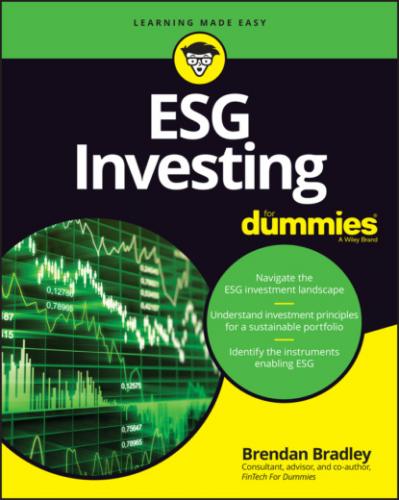www.un.org/development/desa/disabilities/envision2030.html for details on the SDGs, and see Chapter 3 for more about the environmental aspect of ESG investing.
On trend: Changing investor demographics
The biggest shifts in demographics that the world faces today include the following:
Aging population: The global population is aging rapidly (and living longer) in more developed economies as fertility rates decline, while in developing countries the population continues to increase.
Baby boomers, millennials, and Generations Z and X: Millennials, those between the ages of 23 and 38, account for over a third of the global population and are starting to receive a multitrillion dollar wealth transfer from their parents, the baby boomers, as they pass on their inheritance to the next generations. Both this group and those slightly older, Generation X, who have deeper pockets, and those younger than them, Generation Z, with fewer funds but a keen interest in sustainable investing, will drive investment flows in the future.
Future workforce: As the population continues to age in developed economies, fewer people are available to sustain the working population. With a declining working population, modifying a workforce’s skill set may be key to keeping economies buoyant. As automation increases, workers must develop more advanced skills to stay competitive. The New Economy will have to ensure that automation supports a shrinking workforce, without limiting job and wage growth.
Immigration increase: Immigration has been further increasing since the beginning of the 21st century. Key migration factors range from political turmoil and conflict to the continuing quest for a better quality of life.
Consumer spending: In developed economies, an aging population is gradually shifting the purchasing power to older households. Global consumer spending from those over 60 years of age has nearly doubled from 2010 to 2020.
Education reform: By 2100, over 50 percent of the world will be living in India, China, or Africa. Future education and training must be based on skills relevant to the modern workforce and shifting global demographics in these regions.
Rapid urbanization: Population concentration in certain countries supports the case for rapid urbanization and is an overarching trend to consider, given that this principle originated in developed economies in the 20th century, with people transitioning from agricultural work to factory and service jobs.
Crunch the numbers: Evolving data and analytics
The rapid growth in ESG investment strategies has been underpinned by the increasing availability of corporate sustainability metrics. Investors have embraced this information and integrated it into financial analyses and decisions. In addition, new technology, including artificial intelligence (AI) approaches, has allowed investors to run more enhanced analysis.
Investors are progressively applying non-financial factors as part of their analysis process to recognize material risks and growth opportunities. ESG metrics aren’t generally part of mandatory financial reporting, though companies are gradually including disclosures in their annual reports or in stand-alone sustainability reports. Also, institutions such as the Sustainable Accounting Standards Board (SASB) and the Global Reporting Initiative (GRI) are forming standards and defining materiality (a means of identifying which factors matter most for a specific company, from a wide and complex universe of sustainability indicators) to simplify incorporation of these factors into the investment process.
The practice of reflecting ESG issues has evolved considerably from its origins in the negative or exclusionary screening of listed equities based on moral values. Some providers still focus on negative screening, where they exclude firms or sectors from investment portfolios, often on ethical or religious grounds (for example, tobacco, alcohol, ammunition, and gaming). Another common use case is limiting exposure to poor labor conditions, corruption, or other issues in the supply chain. A variety of methods are now being used that consider concerns for both purely investment-motivated and more values-motivated investors across asset classes. For example, ESG screens that identify what investors consider to be the worst-performing or “best in class” companies, in terms of their ESG score within a specific sector, are frequently applied. Yet providers don’t agree on which factors are most important, and much less data is available to help identify positive opportunities for sustainable investment. I discuss the ratings bias in more detail later in this chapter.
